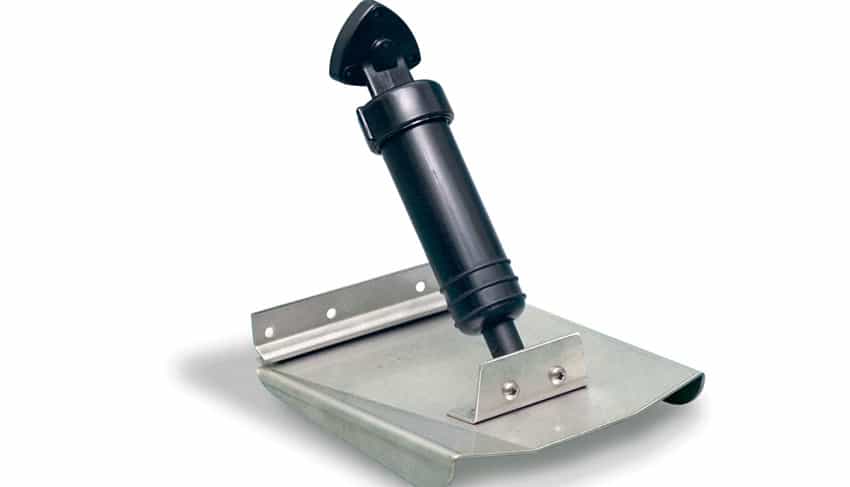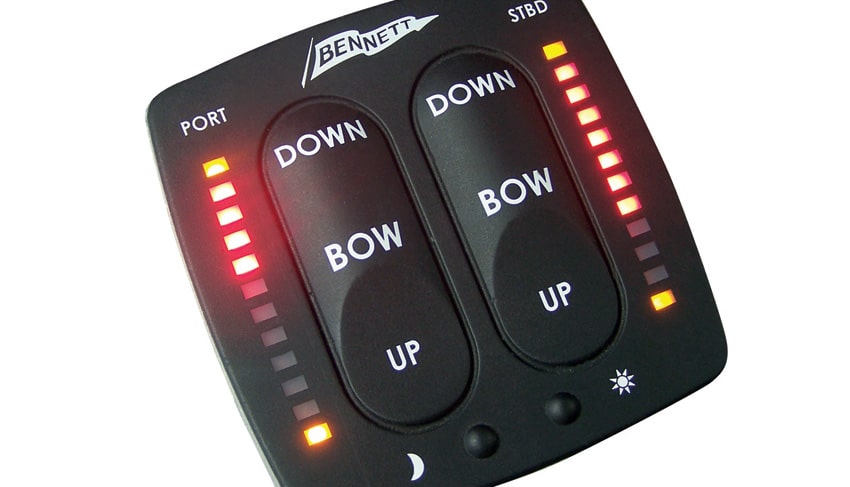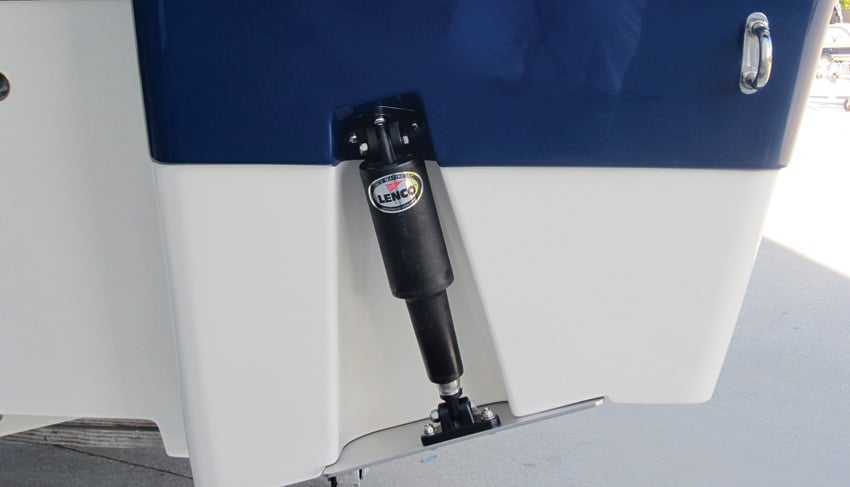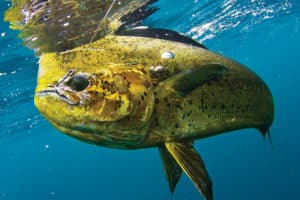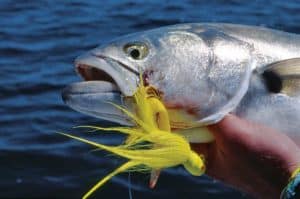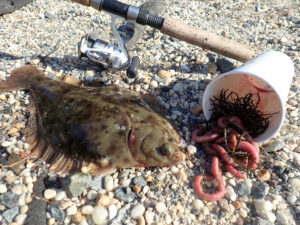For two years I ran my 21-foot center-console fishing boat without trim tabs. Boy, was that a mistake, as I discovered after a friend recommended tabs while slogging through a particularly rough offshore run. I installed tabs before our next fishing trip, and we never took a pounding like that again.
In truth, any hull can benefit from the ability to adjust its running attitude — the angle at which the bow meets the seas — to accommodate anything the ocean can throw at you.
For example, when meeting a steep head sea, many boats run more comfortably and efficiently with the bow down slightly, allowing the sharper forward-V to knife through the waves. Conversely, in a following sea and when overtaking waves, it is often safer to run with the bow up a bit to help prevent stuffing into the backside of a roller.
**
There are three ways to adjust the running attitude of a boat:**
**
Shifting Weight**
This is the most rudimentary method, and practical only on smaller boats. On big boats, moving loose gear and equipment forward or aft usually doesn’t make much of a difference.
Yet, on a skiff that is bow-heavy, shifting weight to stern might help level out the boat. If possible, sea-trial the skiff in protected waters to see how the hull responds to any changes in weight distribution before venturing out on bigger waters.
Drive Trim
If your fishing boat has stern-drive or outboard power, you can use trim angle to influence running attitude. Trimming drives or outboards upward (positive trim) tends to elevate the bow, while trimming downward (negative trim) tends to drive the bow down.
When trimming up or down, do so in increments to see how the adjustments affect the running attitude. For example, you don’t want to force the bow too far down — the boat will tend to plow and/or bow steer, which results in sluggish performance and poor fuel economy.
On the other hand, too much positive trim can also cause a hull to “porpoise” — a phenomenon in which the bow alternately rises and falls, leading to an uncomfortable oscillation and reduced fuel efficiency.
In addition, too much positive trim can cause propellers to lose bite and aerate, especially when the boat crests a wave. Not only does that diminish speed and fuel efficiency, it can result in a loss of control.
Trim Tabs
Many new boats come with tabs today, but they can be added at any time, with installation kits from companies such as Bennett Marine (www.bennetttrimtabs.com) and Lenco Marine (www.lencomarine.com), available through boat dealers and marine retailers. With two independently adjustable plates at the bottom of the transom controlled by a switch panel at the helm, trim tabs allow you to fine-tune the ride of virtually any boat, whether it has outboard, stern-drive or inboard engines. With inboard power, trim tabs are the only means of adjusting the running attitude of the boat.
Even when retracted, tabs effectively extend the running surface without adding substantial weight. This alone can help, since the longer a hull is, the smoother it rides.
While tabs cannot elevate the bow, with just a bit of downward adjustment, they can create lift in the stern, allowing a boat to run higher. This reduces the wetted surface, which can improve fuel efficiency.
With more downward adjustment, tabs can bring the nose down to help smooth the ride in a head sea, or level out the ride if you are forced to go slow but need to minimize bow rise while slogging it out in snotty conditions.
Also, with tabs on an outboard- or stern-drive-powered boat, you might not need as much negative trim to get the bow down. With the tabs down, you can leave the drive or outboard vertical with the propeller pushing straight back, which can also improve fuel efficiency.
Trim tabs can also improve acceleration. With downward adjustment as you throttle up, trim tabs create stern lift, minimize bow rise, and help the boat level out and get on plane in less time.
Also, because tabs are independently adjustable, they can balance the boat side to side while under way. This can be useful if you have extra weight on one side of the boat or prop torque that is causing the hull to heel over. A touch of down tab on the affected side can straighten things right out.
There is a time when you want to fully retract tabs, and that is when you need the bow up as much as possible, such as when overtaking waves in a following sea. Also, tabs can snag or cut fishing line if you’re not careful when working a fish across the stern, though many boats now have the tabs recessed to minimize this issue.
At sea, the only thing you can count on is change. That’s why having the ability and know-how to adjust your running attitude to meet ever-changing conditions is so important on a saltwater fishing boat.
Hydraulic vs. Electric Trim Tabs
There are two basic types of adjust-on-the-fly trim-tab systems — hydraulic and electric.
Most common for decades was the hydraulic system offered by Bennett Marine (www.bennetttrimtabs.com). Still popular today, this reliable system consists of an electric pump and fluid reservoir actuating a pair of independently operating hydraulic rams that move the tabs up and down. The skipper controls the tabs with rocker switches, buttons or a toggle at the helm.
About 15 years ago, another company — Lenco Marine (www.lencomarine.com) — came on strong with an electric trim-tab system consisting of two electric motors, one inside each of two independently operating rams powering screw jacks that move the transom plates up and down, controlled by a waterproof switch plate at the helm.
While both systems have proved to be durable in the saltwater environment, there are advantages and disadvantages to both.
Bennett’s hydraulic system has more parts and is more complex to install, but no electric motors, wires or connectors are ever submerged in salt water, as they are with an allelectric system.
If salt water gets to the motors, wires or connectors, the Lenco all-electric system will quickly malfunction, and any current leak could also lead to electrolysis.
On the other hand, Lenco has simplicity on its side. Its all-electric design eliminates the need for hydraulic reservoirs and pumps. It also comes standard with an LED tab indicator in the control pad, showing how far each tab is deployed. Tab indicators are available from Bennett, but are options and require additional wiring.
